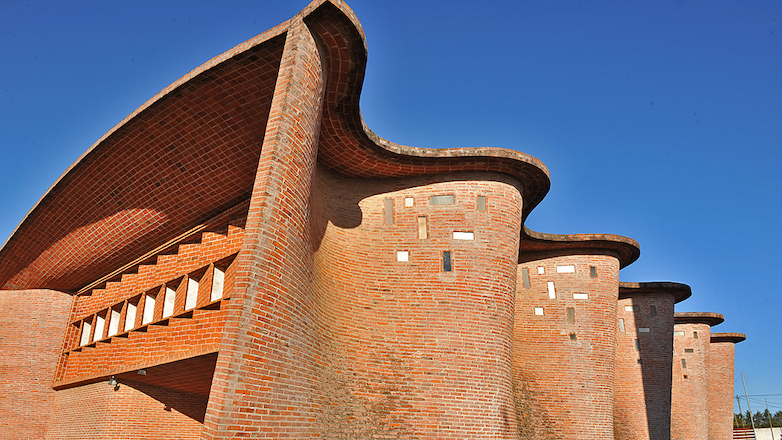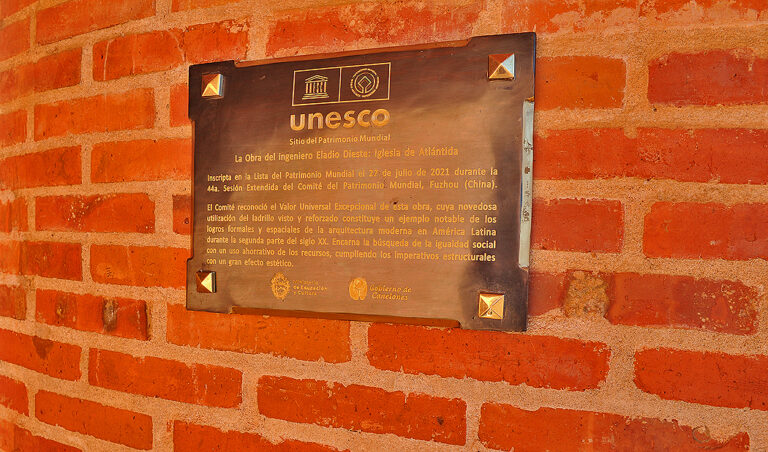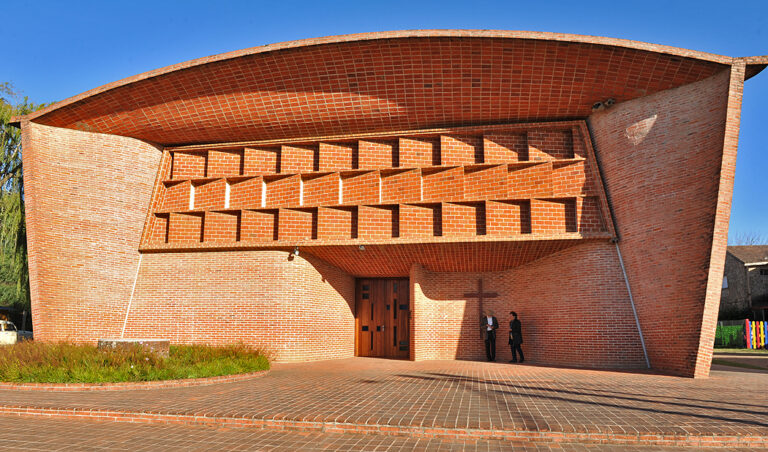- Home
- About us
- News
- Events
- EXPORT Export
-
BUY
Buy
Buy
- INVEST Invest
- COUNTRY BRAND Country Brand
-
INFORMATION CENTER
Information center
InformationCenterInformationCenterReports Country reports Department reports Foreign trade reports Product-Destination worksheet Sectors reports Work documentsStatistical information Classification Uruguay XXI Exports Imports Innovative National Effort Macroeconomic Monitor Tools Buyers Exporters Investors
- Contact
-
Languages
Unesco certifies Uruguayan Eladio Dieste's work in Atlantida as a World Heritage Site
The Church of Cristo Obrero and Our Lady of Lourdes in Atlántida, which stands out for its iconic use of brick and its vaulted structure, was declared a World Heritage Site.
Share:

Unesco delivered on Tuesday, May 3, the certificate declaring the Church of Christ the Worker and Our Lady of Lourdes a World Heritage Site. The building, built between 1958 and 1960, is the product of the work of the world-renowned Uruguayan engineer Eladio Dieste, who became a reference for the use of what he called reinforced ceramics.

The ceremony held in the church itself, located in Atlántida, was attended by UNESCO's Director General, Audrey Azoulay, and Uruguayan authorities such as the Undersecretary of Culture, Ana Ribeiro, the Undersecretary of Tourism, Remo Monzeglio, the National Director of Culture, Mariana Wainstein, the Director General of the Heritage Commission, William Rey, and the Mayor of Atlántida, Gustavo González.
The World Heritage designation of Dieste's work shows the capacity and talent that exists in Uruguay and adds another distinction for the country, an excellent platform for the development of architectural and engineering services: service provider, partner for expansion in Latin America and alternative for locating a regional office.

Among other recognitions to this outstanding referent of the Uruguayan architecture and construction sector is the designation in 2005 as the "Eladio Dieste Year" by the Museum of Modern Art in New York, Princeton University and MIT in Massachusetts. His legacy is studied and visited by professionals from all over the world.
